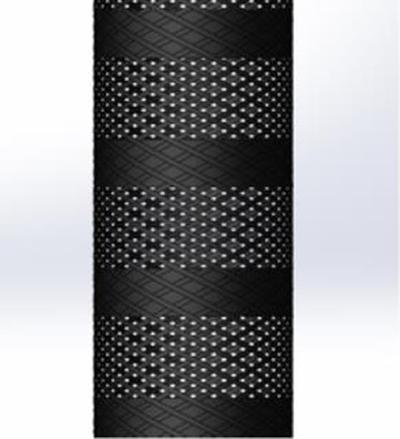Brief description
Alan Turing conceptualised the use of evolution to develop intelligent machines, we utilise this idea to solve complex, real-world, engineering problems.

Explore this case study
The challenge
Engineering is about finding the ‘best’ solution in complex scenarios. In many of these situations determination of what is ‘best’ can be difficult as it may have subjective elements or be defined by a customer with their own changing objectives. In addition, the problems we want to solve often have many solutions that look similar but that perform very differently. This makes it difficult, perhaps impossible, for humans to engineer this ‘best’ solution. We therefore use algorithms to search through the design space and visualise the potential designs, perhaps hundreds or thousands, which engineers, or customers, can choose from and which help us understand the relationship between the different design decisions and the eventual performance.
What we do
We use a Genetic Algorithm, developed at the University of Southampton, to search the design space and propose solutions. It follows Darwinian evolution, with Mendelian genetic inheritance. We start with a random population of engineered products and define a fitness, for example low cost and mass. We determine how ‘good’ each design is and the fittest mate to have more children, with each successive generation becoming fitter on average. In our example this means we gradually find lower mass and cost solutions the longer the simulation lasts.
Our approach is novel in that it is one of the first to be inspired by the extended synthesis of evolution, new theories developed by evolutionary scientists to more completely explain how we got here. We use a Multi-Level Selection approach, where the survival of each product is dependant on its own fitness, like traditional evolution, but it is also part of a collective, where an example might be a wolf pack, where its chance of survival is also based on the fitness of that collective. This gives us a wider diversity of search, allowing a wider range of solutions to be found during the optimisation process than with previous algorithms.
Our impact
Prosthetic Legs – we are investigating, with Radii Devices, how prosthetic legs can be designed using Genetic Algorithms, to provide a more robust fit and reduce the potential to damage the residual limb.
(Quote from Radii Devices: At Radii, the Genetic Algorithm has been a key component in demonstrating our vision for a more data-driven prosthetic design process to clinicians, patients and investors. We are currently working to integrate it into a future version of our software to enable clinicians to access this technology at the point-of-care, supporting them in delivering the best care for their patients. Joshua Steer, founder)
Automated Machine Learning – we have automated the training of Neural Networks, to provide AI that will improve the performance of an Air Lubrication system developed by Silverstream Technologies, which already reduces fuel usage in ships by 5-10 percent.
Structural Design – with Far-UK we have developed an optimisation process to design composite structures that are lightweight and easy to manufacture. The technology will be utilised on structures in the space, rail and automotive markets.
Leisure boat design – with Olesinski we have developed software that can optimise the internal layout of a leisure boat, placing furniture to give owners a rapid visualisation of how changes in design will affect their living spaces and reducing design times from two weeks to two days, with the hope to bring it to one day in the future.
T-VOS© - with Theyr Ltd we have developed a voyage optimisation software that can determine the optimal speed and route for a vessel, saving over five percent of fuel consumption and over 10 percent of time over existing alternatives.
The facilities we used and partners we worked with
Key publications and media
Sobey, A.J. and Grudniewski, P.A. (2018) Re-inspiring the genetic algorithm with multi-level selection theory: Multi-Level Selection Genetic Algorithm (MLSGA), Bioinspiration & Biomimetics, vol. 13(5), pp. 1-13
Grudniewski, P.A. and Sobey, A.J. (2018) cMLSGA: A co-evolutionary Multi-Level Selection Genetic Algorithm for Multi-Objective Optimization, arXiv:2104.11072, 2021
Related Staff Member
Related Staff Member
Related Staff Member
Team
Thomas Ezard - I am interested in how the structure of populations and communities interacts with environmental changes to determine ecological and evolutionary dynamics.
PhD students (names only, no links): Sizhe Yuen, Amy Parkes, Emanuelle Zappia
Genetic Algorithm “thinking” through a number of boat layouts before defining one almost identical to that developed in industry

Figure 2: A design developed during a student project that is projected to save 21 tonnes of mass as part of a reusable launch vehicle.

Figure 3: The floor plan for a new yacht with 8 rooms, designed by the Genetic Algorithm within the constraints of the boat hull and placed to enhance usability.

Figure 4: The Silverstream® System generates a layer of microbubbles along the bottom of a ship hull to reduce drag. We are developing AI to optimise generation of the bubble layer and further reduce drag.

Figure 5: The pressure on the residual limb created by the prosthetic, where the design has been created to move the load from the end of the limb which in this case is sensitive after surgery

Fgure 6: An example of a voyage optimised between Rio and Sikka by T-VOS©


